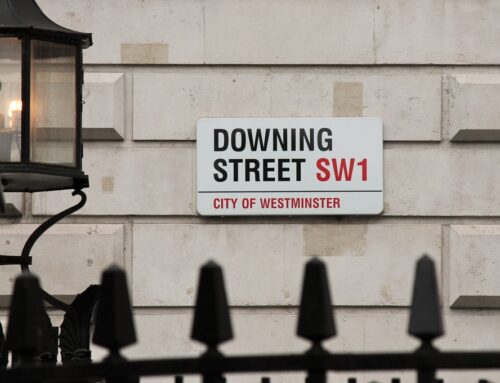I've fought the good fight against bad Power Point (PP) for some time now, and the forces amassed against the Microsoft Juggernaut have made some headway at the level of the debate, but not much at the practical level. There's still a whole lot of bad PP going on.
Let's get some things clear. First of all, bad PP NEVER helps a speech — whether it's a presentation to a team, or a keynote, or a Senator's filibuster. All bad PP does is document the horror. What do I mean by bad PP? Anything that involves more words than pictures. Those are speaker notes, and they should not be shown to the audience. I gave a speech this week, and there was one speech before mine at the event. That speaker included two columns of bullets on one slide, which he introduced by saying, "You probably can't read this, but…." Please!
Second, PP rarely improves a bad speech. A bad speech is just that, bad. Whether it's because the speaker hasn't adequately prepared, and rambles, or the non-verbal conversation is at war with the verbal, or the topic is not right for the audience — there are a million possible ways a speech can go wrong – when it's bad, it's bad. Of course, PP gives you something to look at if your mind is wandering, but that's like starting to study the scenery in a bad movie — you're still not having a good time. Worse than that, your time is being wasted.
Third, good PP (see Presentation Zen, which I've recommended before) CAN add to a good speech, under certain conditions. First of all, the PP has to do something that the words can't do. So, a great picture can bring something to life in a way that it takes too many words to do. A bit of video can add emotion and context, and put you in a place that words can't do so easily. And so on.
But, NEVER use even good PP as wallpaper, especially for a speech, such as a keynote, when inspiration is supposed to be part of the deal. Here's what happens: you're asking the audience to multitask, and the studies show that multitasking makes us STUPID. So don't do it. Of course, we're used to multitasking, and having lots of distractions, and some people think they're not being fully utilized, or pampered, unless all that's going on, but a GOOD SPEECH holds an audience WITHOUT the need for PP.
Bottom line: use PP with care, make it about pictures, and focus on getting the speech right first. If people need PP to get through your speech, there's something wrong with the speech.








The problem we face is that many people think that the slide deck is the presentation. How many times have you heard, “Send me your presentation.”
I know a lot of people who immediately crank-up PowerPoint when they have to create a presentation. It isn’t just the tool, the entire mindset surrounding presentation is messed up. If you decide that slides are needed to help illustrate your point then they should be the very last portion of the presentation developed.
Plus, people know they are producing crappy presentations. They know this and choose to do it anyway. Maybe they do this because they are uncreative, or scared to be different.
Steve Jobs is constantly praised for his presentation skills. Rightfully so. You would think that business people would emulate him. You would be wrong, but it seems logical.
I decided, just today that I am going to devote the next few months (maybe years) developing some serious whiteboard skills. The whiteboard is more interactive, flexible and intimate. Plus, these skills will translate well to slideware when I need to use it.
Man, it felt good to vent!
Best wishes,
Jeff
PS: “Make Your Speech…” is awesome! It should be required reading for everyone.
A PowerPoint Problem You Probably Haven’t Considered
Lord knows there are many issues with using PowerPoint or Keynote. There is one that I don’t recall ever reading about. It is… Presenting slides … Think about that for a moment. I know you have all seen it. At
Nick,
I like your relation between looking at the scenery of a bad movie and looking at the power-point slides of a bad presentation. Both remind us that our time is best spent elsewhere.
As I’ve been surfing around on the public speaking blogosphere recently, I’ve come across a lot of people promoting flip-charts over power-point. Do you think this is a good piece of advice?
I do like flip charts, because they can be used interactively. Audiences like to see their words, suggestions, ideas, and so on captured on paper. It requires a speaker who’s quick on his/her feet.
Nick,
Another great post and enjoy the subsequent dialogue too. Agree that a good PP is really about complimenting a good speech. In my day job, I work with lawyers and witness on presenting difficult concepts to jurors. In this context, well done graphics are instrumental at teaching and explaining difficult information.
On the topic of flipcharts, it takes a well-rehearsed and competent speaker to pull them off and do it well. If it’s done poorly, it can detract more than add from the presentation because viewers spend their time trying to figure out what you are doing and don’t listen to what you are saying.
In this multimedia day in age, I think it is unrealistic to think you can captivate an audience without some sort of demonstrative aids.
Keep up the good posts!
Theresa